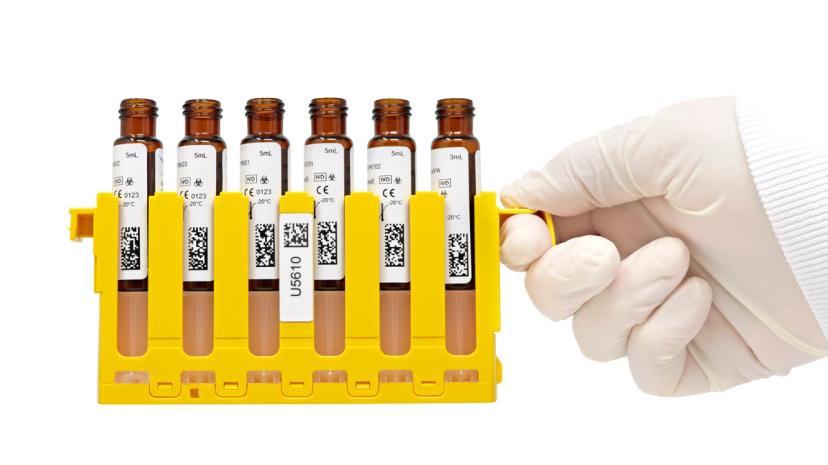Six Sigma metrics advance clinical diagnostics
Discover how modern quality control (QC) principles can enhance operational efficiency and healthcare outcomes
20 May 2024

Dr. Joseph Litten, Corporate Technical and Development Manager at Valley Health System
Dr. Joseph Litten, Corporate Technical and Development Manager at Valley Health System’s non-profit hospital network in the United States, shares invaluable insights for laboratories seeking to enhance efficiency and quality standards in clinical diagnostics. Highlighting the transformative impact of advanced QC methodologies like Six Sigma in laboratory settings, he explains how data-driven decision-making can ensure significant cost-savings, enhanced productivity, and ultimately, superior patient care outcomes.
The field of clinical diagnostics relies on accurate, reliable, and consistent test results for timely and well-informed clinical decision-making. Effective quality control (QC) programs play a pivotal role in minimizing the risk of erroneous or delayed test results, thereby preventing disruptions to patient care.
The roadmap for effective quality control programs
With over forty years of experience in laboratory set-up and management, Litten has overseen instrument selection and implementation of QC programs for clinical chemistry as well as diagnostic labs, providing roadmaps for effective laboratory operations. Discussing the critical elements of establishing a robust QC program, he explains, “First, it is important to work closely with medical directors and staff to determine acceptable quality goals and error margins. This collaboration helps to ensure that a prescribed treatment is not affected by inaccurate laboratory tests. Next, it is crucial to understand instrument and method capabilities to assess test precision and accuracy.” These two fundamental steps help evaluate whether results from the chosen instrument are within allowable clinical error.
In the past, laboratories solely relied on QC methods based on calculating mean and standard deviation across multiple test runs to assess test robustness. However, these methods are no longer considered adequate because they do not provide information about test accuracy and precision. Instead, adopting Six Sigma – a set of techniques for process improvement – has proven more effective. Analyzing Six Sigma metrics offers a comprehensive evaluation of test accuracy and precision, which Litten believes empowers labs to implement tailored QC rules. This, in turn, simplifies the monitoring of method performance and ultimately ensures reliable testing outcomes.
Explaining how comprehensive QC programs benefit lab performance, Litten reflects, “In 2010, when our lab was looking for some new instrumentation, we broadened our criteria beyond standard metrics like ease of use, reliability, cost and throughput, to also include the quality of test results in our selection process. To make an informed choice, we analyzed College of American Pathology (CAP) test survey results and precision data across instruments from various vendors using Sigma metrics. Our analysis revealed that Abbott's Architect series of instrumentation outperformed that of competitors in terms of results quality, while being comparable on the other metrics. Based on this, we chose Abbott as our preferred vendor, and their instruments have since exceeded our initial expectations with exceptional test quality. In 2019, we then moved over to the Abbott Alinity series.”

Multichem quality controls for the Abbott Alinity series
With the move to the Alinity series, this led Litten’s team to Technopath’s, which is now part of LGC Clinical Diagnostics, consolidated Multichem quality controls (and the paired IAMQC software), the only validated and approved independent QC solution for the Abbott Alinity series. With over six years of use since, the Multichem consolidated controls have helped the lab achieve its quality goals by improving operational efficiencies, such as reducing handling time and dead-volume waste, all while using fewer products for meeting core analytical needs, remarks Litten. Additionally, the IAMQC® Peer software, together with Abbott’s systems, has helped optimize QC analysis time by enabling end-users to automatically calculate and review their Sigma metric performance.
Overall, Litten underscores the importance of a strategic, data-driven approach such as one driven by a Sigma program in selecting lab instruments, reagents, and calibrators as it allows for an easy comparison of output quality across options. Today, the data critical to such informed decision-making is more accessible, with vendors also increasingly sharing relevant valuable information openly. Thus, a comprehensive analytical approach can significantly enhance lab performance by improving result quality, reducing recalibrations, and enhancing overall efficiency.
The multi-fold impact of Six Sigma programs
Implementing Six Sigma metrics brings significant benefits to various stakeholders in the laboratory setting, states Litten. “From the end users’ – i.e., the technician's – perspective, there's a notable reduction in control rule failures by up to 50%, and recalibrations by up to 90%, compared to when not using Six Sigma. This means less time spent on investigating test failures,” he elaborates. “Administratively, these metrics enable proactive quality monitoring, which translates into higher departmental efficiency. From a healthcare providers’ standpoint, consistently high-quality test results are achieved, minimizing complaints related to test quality, with any issues typically attributed to specimen quality rather than laboratory performance."
Discussing his lab's experience with implementing Sigma programs, Litten highlights that while his team anticipated fewer rule failures as a tangible quality improvement, they were pleasantly surprised by additional operational efficiency benefits such as decreased reagent costs and enhanced staff productivity. “On a conservative estimate, our lab has saved over US$50,000 annually in QC and reagents, attributed to reductions in recalibrations and repeat QC processes,” marvels Litten. “Improvement in staff productivity – saving at least an hour daily, if not more, on QC tasks – equated to approximately $70,000 in annual operational cost savings.” These savings – calculated over a decade ago – not only contributed to broader hospital cost-cutting initiatives immediately, but have also continued to benefit his lab over time. Additionally, he notes that subsequent provider feedback has shown that consistent and high-quality test results from Six Sigma implementation have helped minimize patient care disruptions due to reduced testing inaccuracies.
The future of Six Sigma methods in diagnostic laboratories
Despite the established advantages of Six Sigma methodologies, Litten expresses concern about the gap in personnel training that he currently observes, especially among newly graduated technologists. “Unfortunately, many schools today still teach outdated QC practices, which hinders the adoption of more effective QC approaches,” he says. “For comprehensive guidance on advanced QC processes, I highly recommend the Westgard website.” Recognizing the need for prolonged training to ensure successful implementation, Litten actively teaches advanced QC methods to his students at the Valley Health System, hoping to expose future technologists to modern QC practices from the outset.
Looking ahead, Litten foresees continued advancements in laboratory instruments and methodologies, and an increasing confidence in testing results, as more instrument vendors publish information around anticipated test result quality. “Embracing proactive and transparent reporting can provide clinicians and providers with more realistic and nuanced result interpretations – this could be a game changer in the clinical diagnostics field!” he concludes.
To discover quality measurement tools and solutions that can enhance your confidence in the performance of diagnostic instruments, explore the comprehensive portfolio of diagnostic reference standards, calibration verification materials, quality controls, and more offered by LGC Clinical Diagnostics.
